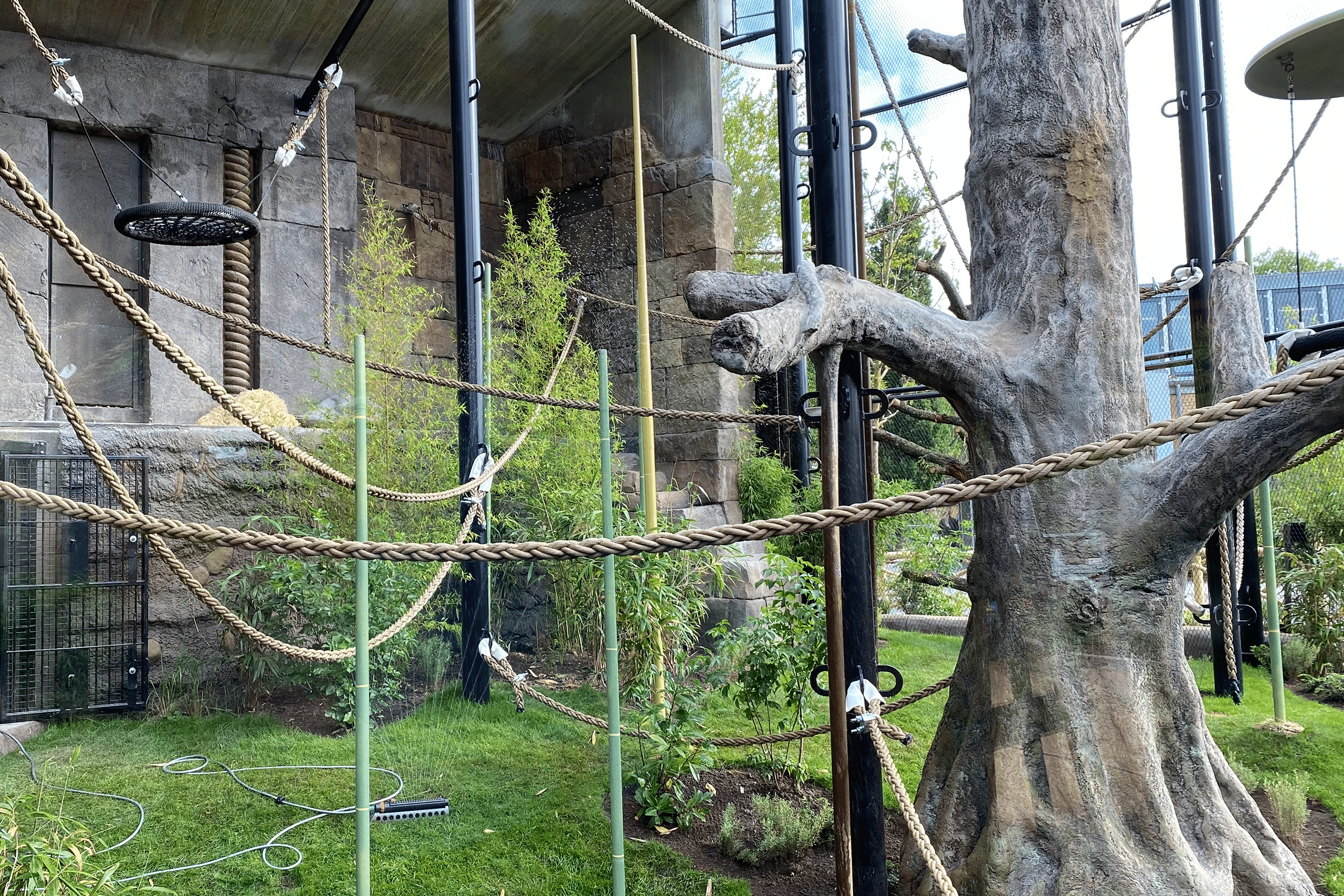How does Aalborg Zoo bring the living environment of orangutans closer to its adult and young visitors? How can an appropriate habitat be created for these intelligent animals?

For the zoo in Aalborg, which is the only Danish zoo to keep orangutans, it is particularly important to provide visitors with information about the endangered animals and their living conditions in the wild. Indeed, the orangutans at Aalborg Zoo belong to the Bornean orangutan species, whose population has declined considerably in Borneo. It is estimated that there are only between 10,000 to 15,000 animals left in the wild today. Hopes are therefore high at Aalborg Zoo that Ruti and Pal will eventually start a small family and provide for offspring.
This requires perfect environmental conditions, which are considered in pearlman’s architectural concept. The existing outdoor area will be completely networked up to an average height of 12 meters to offer the orangutans, who are among the best climbers in the world, a maximum of three-dimensional usable space. A low-cost steel column structure, encased in high-quality stainless-steel cladding, forms the basis for the conversion. A themed shelter allows visitors to view both parts of the enclosure through a glass panel. Tree trunks, swing poles and ropes enhance the space within the net enclosure. Thorny brush and hardy plants serve as natural enrichment for the animals and are planted densely within the enclosure. Existing enclosure walls are clad in shotcrete with an earthen and bluff look and feel. The existing orangutan house in the background will be preserved as much as possible and painted with camouflage paint to enhance the rainforest panorama. The safety distance of 2.5 meters to be maintained between the visitor railing and the orangutan net will receive planting to create a lively environment on the part of the animals and the visitors. The facility includes an education center as well as an open kitchen. Here, visitors can watch the keepers up close as they work and train with the animals. During training, keepers also can perform general health checks and collect saliva and blood samples for research purposes. Interaction between animal species at the overall facility is provided by socializing the orangutans with Asian dwarf goats and otters.